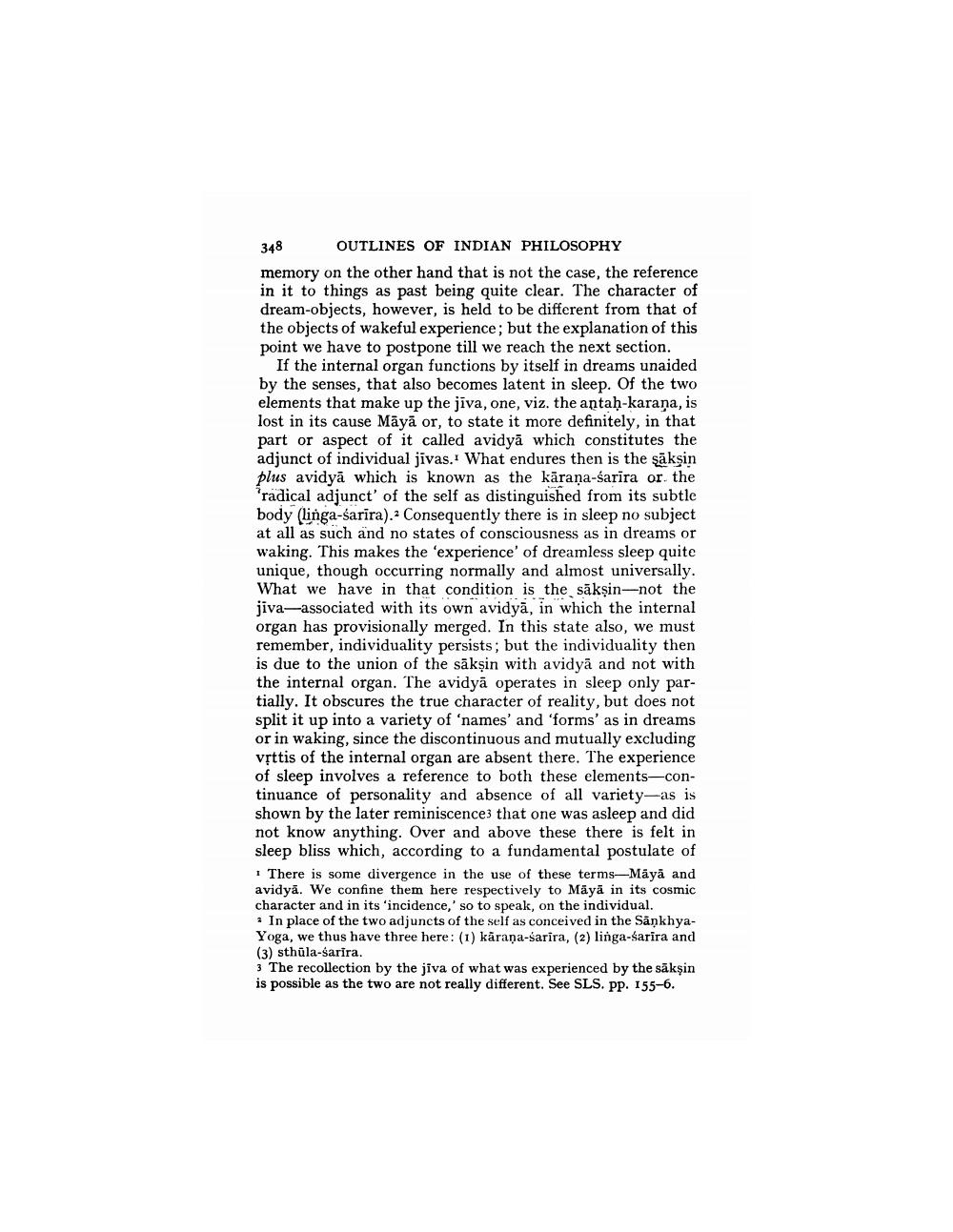________________
348 OUTLINES OF INDIAN PHILOSOPHY memory on the other hand that is not the case, the reference in it to things as past being quite clear. The character of dream-objects, however, is held to be different from that of the objects of wakeful experience; but the explanation of this point we have to postpone till we reach the next section.
If the internal organ functions by itself in dreams unaided by the senses, that also becomes latent in sleep. Of the two elements that make up the jīva, one, viz. the antah-karaņa, is lost in its cause Māyā or, to state it more definitely, in that part or aspect of it called avidyā which constitutes the adjunct of individual jīvas. What endures then is the sāksin plus avidyā which is known as the kāraņa-sarıra or the 'radical adjunct' of the self as distinguished from its subtle body (linga-sarira). Consequently there is in sleep no subject at all as such and no states of consciousness as in dreams or waking. This makes the experience' of dreamless sleep quite unique, though occurring normally and almost universally. What we have in that condition is the sākşin--not the jiva-associated with its own avidyā, in which the internal organ has provisionally merged. In this state also, we must remember, individuality persists: but the individuality then is due to the union of the sāksin with a vidyā and not with the internal organ. The avidyā operates in sleep only partially. It obscures the true character of reality, but does not split it up into a variety of 'names' and 'forms' as in dreams or in waking, since the discontinuous and mutually excluding vsttis of the internal organ are absent there. The experience of sleep involves a reference to both these elements-continuance of personality and absence of all variety-as is shown by the later reminiscence that one was asleep and did not know anything. Over and above these there is felt in sleep bliss which, according to a fundamental postulate of 1 There is some divergence in the use of these terms-Maya and avidyā. We confine them here respectively to Māyā in its cosmic character and in its 'incidence,' so to speak, on the individual. * In place of the two adjuncts of the self as conceived in the SankhyaYoga, we thus have three here: (1) karana-sarira, (2) linga-Sarira and (3) sthūla-sarira. 3 The recollection by the jiva of what was experienced by the sākşin is possible as the two are not really different. See SLS. PP. 155-6.




